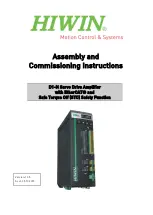
time constant (see 3.2.1). In order to check useful values with respect to the settle time,
refer to the table on page 22.
3.3.4 S
AVE
[ S
PECTRA
/ S
AVE
]
After the acquisition process finished, data can be saved to the hard disk or the USB
flash drive for later analysis. The maximum volume of the hard disk for storing data is
32 megabytes. Up to 100 data files (i.e.
Dat1, Dat2, .. Dat100
) can be kept in the
hard disk. If the USB flash drive is used, it should be compatible with the USB v1.1
specification. The USB flash drive should be formatted as FAT32.
Destination Storage Media
[ Spectra / Save / Dest. ]
This parameter chooses the storage media to save the data to. The options are:
HD
: The data will be saved onto the internal hard disk.
USB
The data will be saved onto the USB flash drive.
If the hard disk is selected, the last-saved file name is displayed in the
Name
item. If
that file is still in the memory,
Exist
will be displayed in the
Save
item. In case the file
does not exist,
Empty
will be displayed in the
Save
item. When USB is selected, the
instrument will check whether a working USB flash drive is connected in one of the USB
connectors or not. If it finds one, the
Name
and
Save
items will be displayed in the
same way as for the
HD
. If no USB flash drive is available or detected,
Error
will be
displayed in the
Save
item.
Choose a File Name
[ Spectra / Save / Name ]
The file name is not dependent on the storage medium. When a storage medium is
selected, the directory
data
will be created in the root directory of the storage
medium. The user can only choose from 100 predetermined names:
Dat1, Dat2, ... ,
Dat100.
Save the File
[ Spectra / Save / Save ]
When a valid storage device and a name is selected, the file can be saved. If the user
select a file which already exists, it will be overwritten without notice. Just press button
3
(see Figure 6) next to the
Save
menu item to activate the action. If the file is
successfully saved, the
Save
item will display
Saved!
, otherwise
Error
will be
displayed (e.g. if the storage media is full).
3.4 O
SCILLOSCOPE
[ S
COPE
]
The input channels of the
eLockIn
are sampled with 40 kHz only, however, their
display in an oscilloscope-like screen can be useful for some applications.
In
Spectra
mode, we acquire the spectra with respect to the frequency. The
Scope
mode allows to acquire the data with respect to the time. All available sources of data
can be shown. Data shown on the oscilloscope screen can be saved for later analysis.
3.4.1 R
UN
/S
TOP
[ S
COPE
/ R
UN
]
OR
[ S
COPE
/ S
TOP
]
As in the
Spectra
mode, this menu item is just a switch between on and off state of the
data acquisition in the oscilloscope. In the default state, the instrument waits for
instructions and does not acquire data. Thus,
Run
is displayed and meant as instruction.
To start the data acquisition press once. As long as oscilloscope data are acquired, this
28 (58)
Summary of Contents for eLockIn 203
Page 52: ...7 APPENDICES 7 1 SCHEMATIC DIAGRAM OF THE SIGNAL PATHS 52 58...
Page 53: ...7 2 DIAGRAM OF THE LOCKIN AMPLIFICATION PATHS Diagram of the preamplifier switches 53 58...
Page 54: ...7 3 FRONTPANEL DIMENSIONS 54 58...
Page 55: ...7 4 INSTRUMENT SPECIFIC TEST SHEETS insert with 10 pages of data 55 58...
Page 56: ...7 5 PREAMPLIFIER CONNECTOR PINOUT 56 58...
Page 58: ...7 7 TRACEABILITY CHART 58 58...















































